#permaculture gardens
Explore tagged Tumblr posts
Text
Website : https://www.terraces-flower-farm.com
Address : Downtown Milford, Michigan, USA
Terraces Flower Farm, situated in Milford Charter Township, Michigan, is a picturesque 4-acre sanctuary where nature's beauty and artistic expression converge. Renowned for its diverse range of organically grown flowers, the farm extends an open invitation to visitors to pick and savor its blooms, fostering a unique environment for creating personal floral art. The farm's evolution, deeply anchored in permaculture principles, has seen it grow from planting fruit trees to the establishment of a flourishing greenhouse, and the cultivation of a splendid variety of flowers. It stands as a haven for wildlife and a perfect retreat for nature enthusiasts to relax and engage in flower crafting.
In addition to its scenic beauty, Terraces Flower Farm offers a variety of services and products that cater to flower enthusiasts and nature lovers. The farm provides a unique U-pick experience, allowing visitors to handpick their favorite flowers from the fields. For those interested in floral design, the farm offers workshops and crafting sessions, where individuals can learn to create their own floral arrangements and art pieces. The on-site gift shop features an array of pre-made bouquets, perfect for special occasions or as a delightful gift. Seasonal activities and garden walks further enhance the visitor experience, making Terraces Flower Farm not just a place to visit, but a destination to experience the joy of flowers and nature's tranquility.
Keywords: permaculture gardening u pick flower farms near me u pick flower farm creative floral designs flower diy crafts permaculture gardens beautiful permaculture gardens seasonal flower arrangements permaculture gardening for beginners permaculture lasagna gardening diy flower pot crafts four seasons flower arrangements seasonal silk flower arrangements permaculture for small gardens permaculture gardens near me permaculture vertical gardening organic flower farm organic flower farm near me certified natural wildlife habitat natural wildlife habitat environmental conservation practices diy paper flower craft abstract creative floral design creative line floral design creative mass floral design creative muse floral design plants for wildlife friendly gardens flower farm u pick u pick flower farm michigan ariella chezar seasonal flower arranging fall season flower arrangements flower arrangements for any season seasonal flower arrangements winter byron bay organic flower farm natural habitat wildlife creative floral design containers wildlife friendly gardening wildlife friendly gardens michigan wildlife friendly trees for small gardens u-pick flower farm fall season flower arrangements for weddings fall seasonal flower arrangements best permaculture gardens flower world organic farm organic flower farms organic flower farms near me best natural based beard relaxer back yard natural wildlife habitat secret garden art walk experience creation art floral creation martine art floral environmental conservation and management practices environmental protection and conservation practices practical environmental and conservation skills diy craft flower diy crafts easy paper flower diy flower craft designs artistic creative line floral design creative abstract floral designs creative display units floral design creative events floral and design
#u pick flower farms near me#u pick flower farm#creative floral designs#flower diy crafts#permaculture gardens#beautiful permaculture gardens#seasonal flower arrangements#permaculture gardening for beginners#permaculture lasagna gardening#diy flower pot crafts#four seasons flower arrangements#seasonal silk flower arrangements#permaculture for small gardens#permaculture gardens near me#permaculture vertical gardening#organic flower farm#organic flower farm near me#certified natural wildlife habitat#natural wildlife habitat#environmental conservation practices#diy paper flower craft#abstract creative floral design#creative line floral design#creative mass floral design#creative muse floral design#plants for wildlife friendly gardens#flower farm u pick#u pick flower farm michigan#ariella chezar seasonal flower arranging#fall season flower arrangements
1 note
·
View note
Text

LOOKlooklooklooklook LOG GARDEN BEDS!!!!
Rotting logs hold moisture like a sponge so it would keep the conditions moist for your plants, It would provide fertilizer to them and ideal conditions for symbiotic fungus, it creates the perfect habitat for useful beneficial creatures, and it could be used on an eroded area to make a barrier against erosion.
If a tree ever falls down in a storm or has to be cut down for whatever reason this is an excellent idea to consider. You could even raise the log off the ground to allow for trailing vines or place things underneath
996 notes
·
View notes
Text
"A recent World Meteorological Organization report called heat waves the “deadliest meteorological hazard” from 2015 to 2019, affecting people living on all continents, and setting new national heat records in many regions.
Canada’s top weather event in 2021 was British Columbia’s record-breaking heat, according to Environment and Climate Change Canada. The temperature in Lytton, B.C., hit 49.6 C on June 29. The following day a wildfire destroyed 90 per cent of the town, killing two people and displacing 1,200 others.
Heat waves also exacerbate existing health issues, including cardiovascular and respiratory disease. They’re associated with increased hospital admissions, psychological stress and aggressive behavior, as well as excess mortality.
During heat waves, the highest temperatures are often found in urbanized areas. Urbanization is almost always associated with an increase in paved, impervious areas, and often a decrease in greenery. Concrete and asphalt roads, and other built materials readily absorb, store and release heat, raising city temperatures, a phenomenon called the urban heat island.
Many studies have shown that urban forests can reduce the urban heat island, and many policies focus their attention on large green spaces.
Small green spaces, such as yards, rooftops and small parcels of undeveloped land, can make impressive contributions to lowering urban heat, but they are often overlooked when developing strategies for urban cooling.
The effect of small green spaces
Cities rarely have the opportunity to add large green spaces to help counter the effects of heatwaves. Smaller vegetated spaces, however, can still meaningfully decrease local land temperatures.
Small green spaces, such as yards, rooftops and small parcels of undeveloped land, can make impressive contributions to lowering urban heat, but they are often overlooked when developing strategies for urban cooling.
A recent study in Adelaide, Australia, found that tree canopy cover and, to a lesser extent, grass cover decreased local daytime surface temperatures by up to 6 C during extreme summer heat conditions. Further inland, suburban yards and gardens can decrease local surface temperatures up to 5 C.
At a quite small scale, on the order of tens of square metres, trees reduced daytime surface temperatures twice as much as grass cover. But grass and other small, low-lying plants, grow relatively quickly, compared to trees.
Cities should adopt short-term and long-term strategies to respond to extreme heat, including the replacement of paved and impervious surfaces with grasses and turf, and increasing tree plantings to boost canopy coverage.
Amplifying the cooling effect
Furthermore, when managing small green spaces, city planners and foresters can select tree species based on their ability to cool the environment. Green spaces with a high diversity of tree species have a greater cooling effect in spring, summer and fall. They also have a larger maximum drop in temperature in the summer, compared to spaces that are less diverse.
For example, tree canopies with large leaves and high transpiration rates — the evaporation of water from plants occurring at the leaves — could provide more cooling.
Planting a variety of species, of different heights, can have a larger cooling effect than tall trees alone.
The structure of green space may also influence its cooling efficiency. In summer, a plant community with multiple layers of trees, shrubs and herbs can further decrease air temperature by 1 C on a sunny day and 0.5 C on a cloudy day, compared with an area only dominated by tall trees...
But overall, trees usually have a stronger effect on cooling than grass. Planting trees in groups, not individually or in lines, is recommended for regulating the microclimate (local climate conditions near the Earth’s surface).
Small green spaces can offer a lot of summer cooling in cities. And cities can learn to manage the configuration of small green spaces better to get more cooling benefits and minimize the trade-offs."
-via GoodGoodGood, July 4, 2024
#green space#urban#urban landscape#urban forest#urban green spaces#food forest#permaculture#gardening#microclimate#cooling#conversation#global warming#climate change#climate action#solarpunk#rooftop garden#ecopunk#meterology#ecology#ecosystems#environmental science#plant trees#good news#hope
711 notes
·
View notes
Text
Making Desert Land Fertile with Water Bunds

#permaculture#regenerative ag#regenerative agriculture#agriculture#farming#gardening#how to make soil more fertile#how to turn a desert into fertile land#soil#soil fertility#organic farming#organic gardening#water harvesting
3K notes
·
View notes
Text
I'm obsessed with these Seed Spires by Studio Tutto
291 notes
·
View notes
Text

Built a greenhouse out of reclaimed windows and scrap wood, took me an embaresing amount of time but it looks good now.
1K notes
·
View notes
Text
Create Your Own Soil Profile!
A garden’s soil is the base of all its growth, and knowing how to properly interact with your soil can make all the difference!
Step 1 Site Observations
Take a few photos of your site (project area)
Note down:
what vegetation is there?
is it near water?
the slope
approximate exposure to sun
Step 2 Take a soil profile
Set out a tarp or a garbage bag
Dig a hole about 3 feet deep (you may want a friend’s help!)
Place that soil in piles onto the tarp, sorted into different soil layers
Remember horizons! (O, A, E, B, C, R(bedrock))
Make a sketch of a soil profile, and measure the depth of each horizon
The top of the profile should start with 0 cm
Refill the hole, and try to return each type of soil in order!
Step 3 Build your profile
Describe each layer of soil, moisture/structure/color/smell
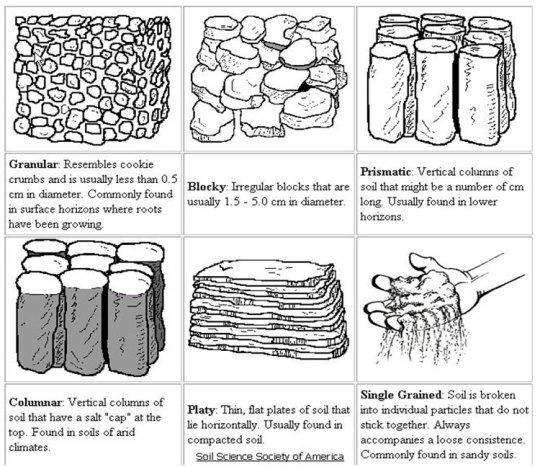
Use the “feel” method to take notes

Step 4 Drainage
Dig a hole 1 foot deep and 1 foot wide(ish)
Fill the hole with water and measure how long it takes to fully drain
An ideal time is around 10 to 30 minutes!
Note down the time
Keep in mind that even if the soil type would suit desert-like plants more, think of the weather. If it rains a good deal the drainage can matter less(or more!)
Step 5 Biological Activity
Bury a pair of cotton underwear(I know it’s silly)
Wait about 60 days
Unearth the undies, the more tattered they are the more activity there is!
Step 6 pH Testing
OSU Lab for Oregon, and many states have soil testing labs
Soil pH Meter
DIY Test
Step 7 Hardiness Zone
This just takes looking at a map!
Hardiness zones can tell you about the weather’s highs & lows in a particular area

USDA Plant Hardiness Map
And that 's it! It's a lot, and you don’t have to do everything. Each step can provide a better view of how to properly support your garden, and can be fun activities to do with friends and family!
I’ve included a template for a complete soil profile, but feel free to make them as fancy as y’all want!
Sincerely,
records of dirt
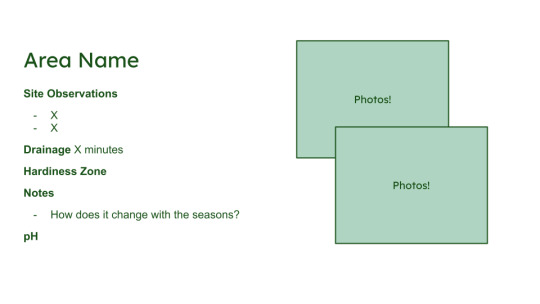
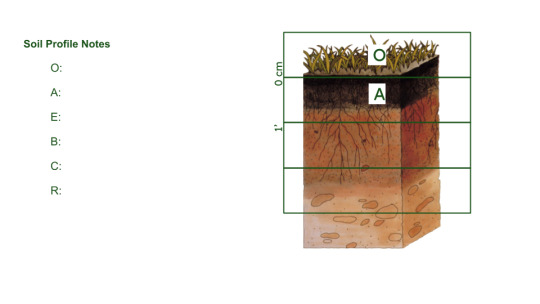
443 notes
·
View notes
Text

This month in gardening has been all about converting plants into meals.
Nasturtiums are a constant main character. I love having them around, but we have to eat them often or they will take over the whole space.
This weekend I made nasturtium ravioli:





They turned out pretty rustic. I don't really know what I'm doing when it comes to fresh pasta, so the dough was too thick. The filling was utterly delicious - ricotta, parmesan, lemon zest, oregano, nutmeg, blanched nasturtium leaves.
It was a good culinary experiment and I learned stuff!
If anybody reading this is in possession of a good nasturtium recipe, please share.
211 notes
·
View notes
Text
The Permaculture Spiral Garden - A Great Starting Point
There is probably no other structure as popular for illustrating Permaculture in practice as the Herb Spiral. Okay, I guess I could mention the lasagna sheetmulching method or also the cob oven that tends to be the first hands-on project at a typical Permie intro session. But when it comes to showing how landscape design, zones and sectors, stacking functions, and efficient use of space and water come together in one unique structure, the Spiral Garden is unbeatable.

Turning Theory into Practice
In typical Permaculture Designer Certificate courses, but even in brief intro weekends to Permaculture, there tends to be a lot of theoretical discussions. Since the numerous design principles can be applied to any climatic region, from the tropical to the subarctic, and on any scale from the humongous to the tiny, the practical aspects of the ideas can easily get lost. That's where a good hands-on application comes, where the participants get to move around rocks and dirt, while realizing how much it ties in to the concepts they've just discussed. This way the apparent "main purpose" of "building something to grow all your kitchen herbs on", becomes a neat side feature.
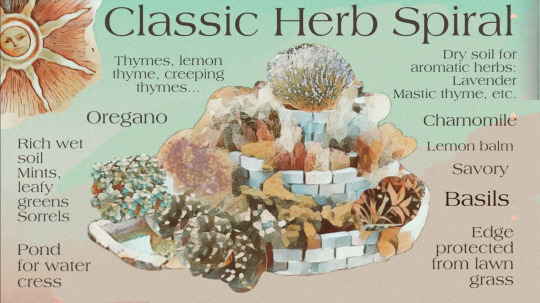
Adjust Your Landscape!
The first thing to realize that landscape is welcome to be modified and adjusted to bring out the best in it. Clearly, while it is important to work with what's there already, it doesn't hurt think about mounds and valleys. And before you bring out the excavators for your large-scale farm, it makes sense to start small… say on a circle of 2-5 meters (6-16 feet) diameter. In other words, the Spiral Garden is a hill with a spiral shaped surface, leading down to ground level, or further down into a water hole. It can be made out of rocks, bricks, concrete debris, or anything else you have lying around that can hold your soil.
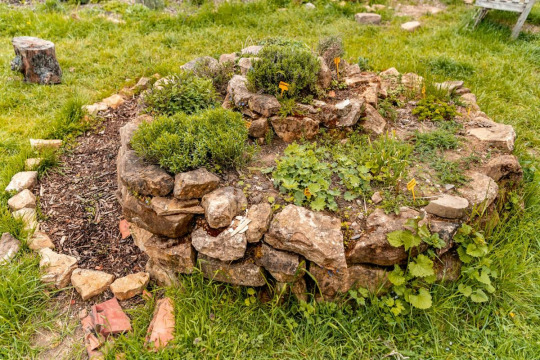
Design According to Your Scale
Looking around for existing Herb Spirals it's easy to get confused. Some are so big you can actually climb on them (that is, you have to in order to reach what's growing on top). Others are so tiny that you may not even want to step on them. The question is: which size is the right one for you? Since this is something you will have to decide almost daily in Permaculture, it doesn't hurt starting out with this important question.
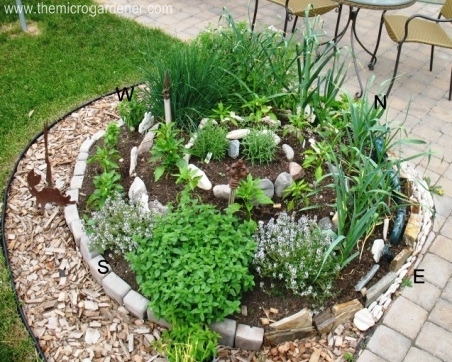
Organizing Your Spiral Garden
While there are seemingly endless types of Spiral Gardens, there are a few things they all have in common: They all start out with a region on the top, where water is bound to run off right away, leaving the soil relatively dry. This area is also the most exposed to the wind. Keep this in mind when choosing the plants that are going to live here. Ideally, the spiral should start sloping toward the East from here. Delicate plants that benefit greatly from the morning sun will appreciate this region. As the slope continues toward the South and West, it becomes more suitable for sun loving species. Finally, as the spiral reaches the ground level in the shady Northern part, it will be perfect for herbs that prefer less sun, more shade and more water, since the soil tends to be wetter here. (Note: This is for the Northern Hemisphere. In the Southern Hemisphere North and South are reversed.) To make full use of the runoff water, many people add a small pond at the base of the spiral, where additional aquatic plants, such as watercress, can be grown.

The given illustration offers a good number of herbs for a nicely diverse kitchen. Depending on what else you want in your Herb Spiral, you can add it in the most suitable region. Mint and lemon balm love the cooler, shady part with more water. Lemongrass is great in the sunny area, and tarragon and estragon prefer the dry top of the spiral. Of course, the idea is not limited to kitchen herbs. For maximalists, the same theory can work with a mountain you might want to terraform into a spiral farm. But right now I'd prefer to stay small scale.

Plenty of Benefits (That's Why It's Permaculture)
As explained above, the main purpose of the Spiral Garden is not only to increase your gardening area by making use of the vertical, but also to create diverse climatic conditions, which do make a difference on the smallest scale. But as Permaculture tends to be, there are many other benefits to it. The structure itself offers great habitat for numerous animals, such as frogs, salamanders, lizards, but also pollinating insects, and of course others that may not directly benefit us, but by feeding on others they all add to the stability of our ecosystem. The structure itself will suppress weeds and make use of material that you're not likely to use elsewhere. Finally, depending on the size and location, it will be an ideal place to grow all your kitchen herbs right where you can access them most easily.

Some Things to Keep in Mind
When building the structure, make sure it will contain the soil in a nice trough, slanting slightly inward. That way bits and pieces that fall off will roll towards the center, until contained by the main mound.
Make sure the slope is always nice and gradual, avoiding sudden drops where the water can rush down quickly, eroding the soil.
If you're going to walk on your spiral, include a separate walkway that won't compress good soil. Most importantly, it should be sturdy enough to provide stability and make access safe.
Don't forget that while the structure is important to keep the soil in place, it is the soil that you'll be growing plants in. So it should have a good depth of 20-50 cm (8-20 inches) throughout the entire spiral. This can be the trickiest part!
Apply your own observation to which plants do better in which parts of the spiral. Also, with time you will find many other plants growing in it that you didn't plant. Before removing them, consider how much they actually bother your herbs, and whether their benefits may not outweigh their drawbacks.
Go Out and Build Your Own!
I hope this brief overview got you inspired to go out and try building an Herb Spiral yourself! I would love to hear your experiences with it!
Sources: 1, 2, 3, 4
3K notes
·
View notes
Text




Know your permaculture guilds
#hopecore#hopepunk#solarpunk#peaceful revolution#greenhorizon#anti capitalism#climate change solutions#naturecore#forestcore#lunarpunk#gardening#permaculture#cottagecore#nature aesthetic#growing my beans and potatoes together#from permies.com#some of these are Australia specific I think#just fyi
174 notes
·
View notes
Text
Hey, hey, don't cry. Plants fruiting and flowering, okay? The earth is laughing and exhaling and taking up space, right?






708 notes
·
View notes
Text







A little collection of late autumn abundance to keep you warm through the darker months ✨️🐓
I cannot believe the garden year is almost over, but I am also ready for some inside time, painting and reading by the fire.
#hedge witch#cottagecore#green witch#forestcore#naturecore#pagan#witch aesthetic#goblincore#witchcore#cottage aesthetic#fall aesthetic#fall vibes#grow your own food#witchblr#garden witch#gardening#permaculture#slow life#underconsumption#homesteading#dark cottagecore#cottage witch
83 notes
·
View notes
Text
Endangered Fireflies & Conservation
Fireflies are at risk of extinction due to habitat destruction, light pollution, and pesticide use. Recovery efforts started in 2023 for the 18 endangered species in North America. Almost 1 in 3 firefly species in the US and Canada are threatened with extinction.
Scientists have yet to prove the effectiveness of these steps due to limited research on firefly populations. However, there is evidence suggesting that human activities may contribute to the decline of fireflies. So, here's what you can do:
Turn off outside lights during nighttime hours
Allow logs and leaves to naturally decompose in your yard
Incorporate areas of water into your landscaping
Refrain from using pesticides in your yard
Avoid excessive mowing of your lawn
Plant native tree species in your yard.
Please take a moment to explore resources related to firefly conservation:
Discover articles from the Xerces Society on firefly conservation: https://www.xerces.org/endangered-species/fireflies
Watch a video from the Canadian Permaculture Legacy on saving fireflies: https://www.youtube.com/watch?v=McjHyQMf5eQ
Learn more about the Firefly Conservation & Research organization: http://www.firefly.org/
Explore their articles on how you can contribute to firefly conservation: https://www.firefly.org/how-you-can-help.html
If you have spotted fireflies in your area, please report your sightings here: https://www.firefly.org/firefly-sightings.html
#fireflies#firefly#lightning bug#bugs#insects#conservation#endangered species#north america#Xerces Society#Fire fly#extinction#environment#cottagecore#gardening#permaculture#agriculture#light pollution#Canada#United States#habitat destruction#habitat loss#restoration#glow worm
211 notes
·
View notes
Text
So, this is cool:
We need to convince more municipalities to plant more trees. I would suggest looking into trees that are more heat and drought tolerant (oaks, not western red cedar, for an example) & also those that grow more quickly. Planting on the west and south (or north, if you're in the Southern hemisphere) of a building matters the most for heat reduction.
If you want to get into it, I'd suggest finding your Köppen climate classification, and then finding either native trees that can thrive in a hotter-but-otherwise-similar climate than yours, or trees from such a climate. For example, I'm in a warm-summer Mediterranean climate so I'm looking at plants from Hot-summer Mediterranean climates that are hardy enough to still survive our winters (oaks, I'm looking at oaks. Fortunately, one species extends from here to down there, so that's easy).
I wouldn't usually advocate for non-native plants, but I'm seeing the climate change quickly enough that I think maybe humans should help with the pole-wards migration of plants.
2K notes
·
View notes
Text
Fun fact the reason garlic was believed to repeal evil spirits and vampires is because it repealdls pests including fungus, many insects, certain rodents etc because it produces fungicides, and produces lots of strong smelling sulfurous compounds hence why you can never have enough garlic in your garden especially around apple trees since apple trees are particularly vulnerable to fungi that are repelled by garlic
331 notes
·
View notes
Text

Community gardens-
Community gardens are a piece of land gardened or cultivated by a group of people, which you can do individually or collectively. So they can be done on private or public land.
Community gardens are not only a testament to community care and mutual aid, it's also almost a radical act of protest and activism. You're combining and sharing resources, which is inherently anti-capitalist, and you're actively protesting climate change by cultivating the land and bringing back native plants. They exist in various forms, it can be located in the proximity of neighborhoods or on balconies and rooftops. They are far from a one size fits all, they are built to meet the needs of the people cultivating them.

History-
this is gunna be a long one yall--
1890s-- Rapid urbanization in Europe and North America lead to community ran gardens to supplement food stocks that the city couldn't maintain causing an obscene cost of food. Thus lead to cities across the world attempting in their own ways to handle the problem-
1893 - Detroit Mayor Hazen S. Pingree took office with citizens even calling for “bread or blood”. In the mist of this crisis the city establishes a program that required vacant lots to be used as gardens and farms for the unemployed citizens have access to food. The deal the city basically makes is 'we will provide the land for you to farm, you feed yourself by farming it!' Later called "Potato Patches" would convert thousands of acres of vacant and idle land in the city for subsistence gardens, then cultivated by the unemployed in order to ensure citizens access to food regardless of the employment or economic status. At its peak, 1563 families participating over 430 acres of donated or City land. This would become so successful that later other cities like Boston and Buffalo would later adopt similar programs.
In England, “allotment” gardens were created to improve working-class people’s food provision, living conditions, and overall health of people living in suddenly crowded city centers.
Marseille in 1896, “les jardins d’ouvriers”, or ‘the workers’ gardens’, were created by a clergyman, with the purpose of reducing the misery of the working class and improving living condition.
1917- The War Gardens Commission was established to call on citizens to become, "Soldiers of the soil," planting gardens to meet some of their own domestic need for food as well as solider rations. (talk about abandoning your citizens for the sake of war >.>) Providing booklets, cartoons, and plenty of propaganda to teach everyone able to grow and preserve their own food supplies. War and Victory Gardens running well through the 1920s into the 50s. Often communties would have a vacant lot or shared spaces to also fullfill any need that wouldnt fit on private land. By 1944, between 18 to 20 million families with victory gardens were providing up to 40% of the vegetables in America.
1970s - In major cities that were fighting both economic crisis and urban decay as a result of white flight to the suburbs. Bringing rise to community groups like The Green Guerillas- built of horticulturalists, gardeners, botanists, and planners who work to turn abandoned or empty spaces in New York City into gardens. The group threw "seed grenades" into derelict lots and developed community gardens, often without going through official channels. It became especially popular after the concerted redevelopment of a dangerous, trash-filled space at the corner of Houston Street and Bowery in Manhattan. That first and now oldest recognized community garden in New York City on a street corner, grew to be over an acre and remains active as of 2023 now named the Liz Christy Garden after its founder who wanted a safe space and good food for children in her community.
2010-Current
Millions of community gardens spanning across the entire world have been reestablished. Particularly over the course of 2012 on wards in order to get back to connecting with the soil and feeding low income housing. Many of the gardens today also hold other community functions like yoga and woodworking classes, socializing centers, holding events, and act as a 3rd space where there are so few these days. Becoming more like a community hub over just a simple source of food.

How do I join or create a community garden?
Join an existing garden- look up one in your area here
To create your own, you will need to do your own research on your city or towns bylaws but generally you'll need a few things-
Gather friends/group to garden with
Secure a place to garden, as well as access to water
Gardening Equipment
Happy Gardening!!
Also @solarpunkani this is for you!!!
287 notes
·
View notes